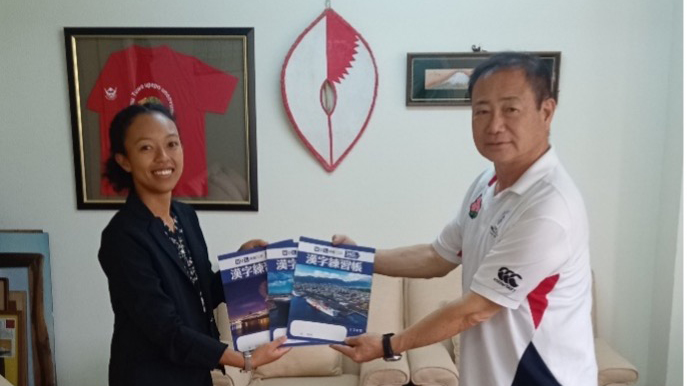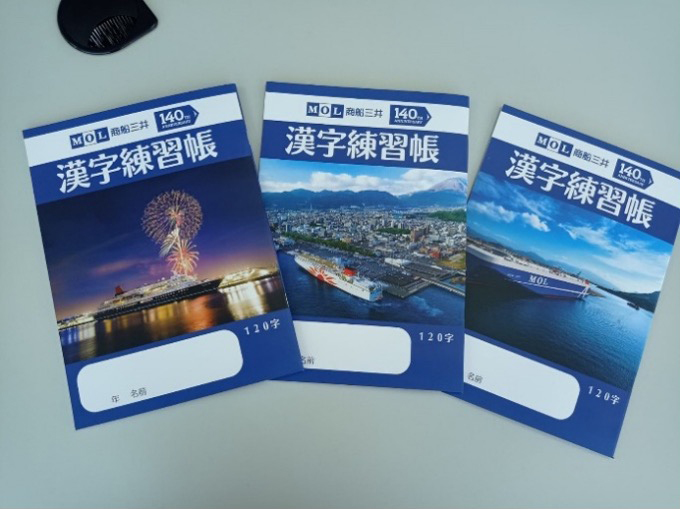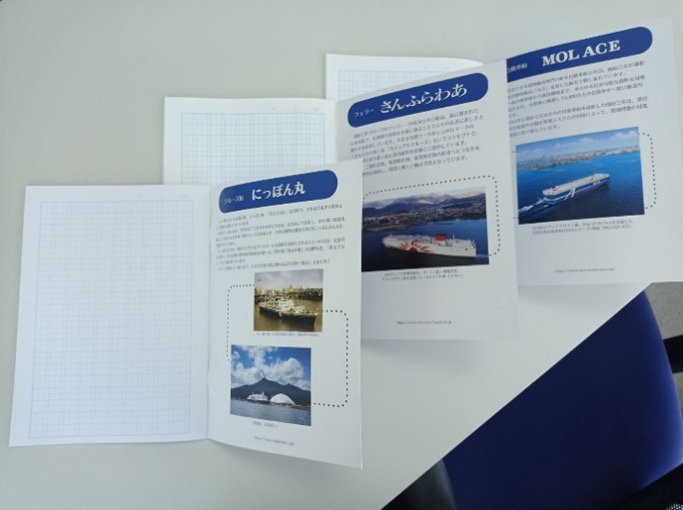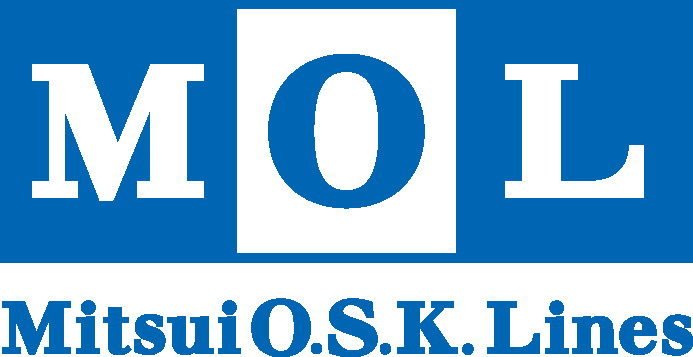We as MOL Kenya have printed and donated notebooks for practicing Kanji (漢字練習帳) as a way to contribute to the study of the Japanese language in both the local community and Japanese community in Kenya.

These notebooks were designed using images of various MOL ships, with short descriptions of each ship, a means to be more educative, as is common in educational notebooks in Japan.
The idea of printing these notebooks came about when thinking of how to best support students that are learning the Japanese language in Kenya, in relation to a project that is currently ongoing. When learning the Japanese language, it is crucial for one to learn the use of Kanji characters (one of the three writing systems used in Japanese). However, due to its unique and complex style of writing, having notebooks tailored to it is important in its mastering. The notebooks have a specific rule lining that assists in proper placement of strokes and advances memorization of Kanji. In Kenya/East Africa, these notebooks are scarcely available and even with availability they are not affordable. That is where the notebooks we printed come in. They come in different sizes for different levels of learning and have been accessible through donation. So far we have donated them as awards for the Japanese Speech Contest held annually at Kenyatta University and to the Nairobi Japanese School (see photo below). The reception of these notebooks have been warm so far; the receiving organizations have been grateful for them.


By supporting students in their language journey, we are not just helping them learn; we are fostering a deeper appreciation of Japanese culture and strengthening the bond between East Africa and Japan. This is more than just an educational initiative—it is a celebration of cultural exchange.



